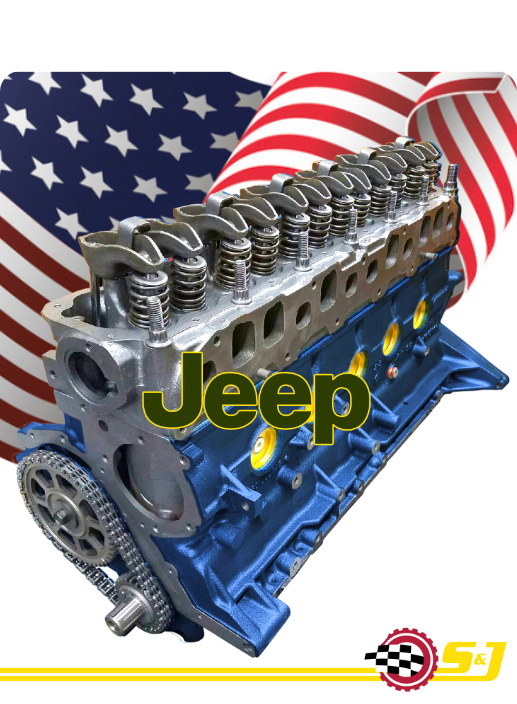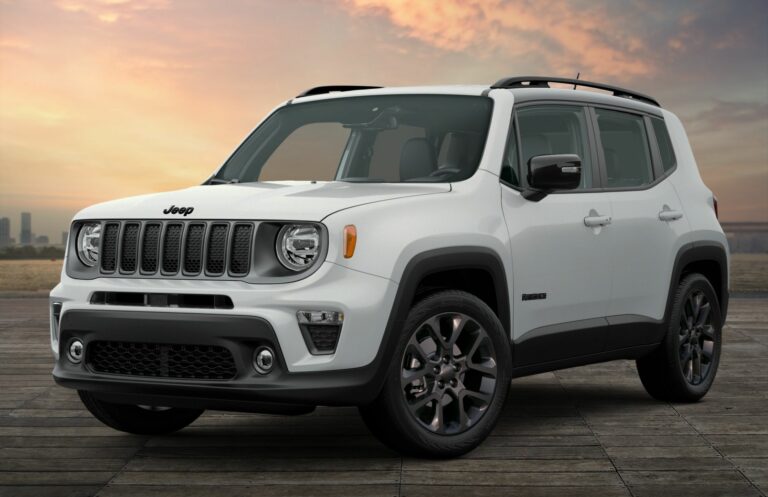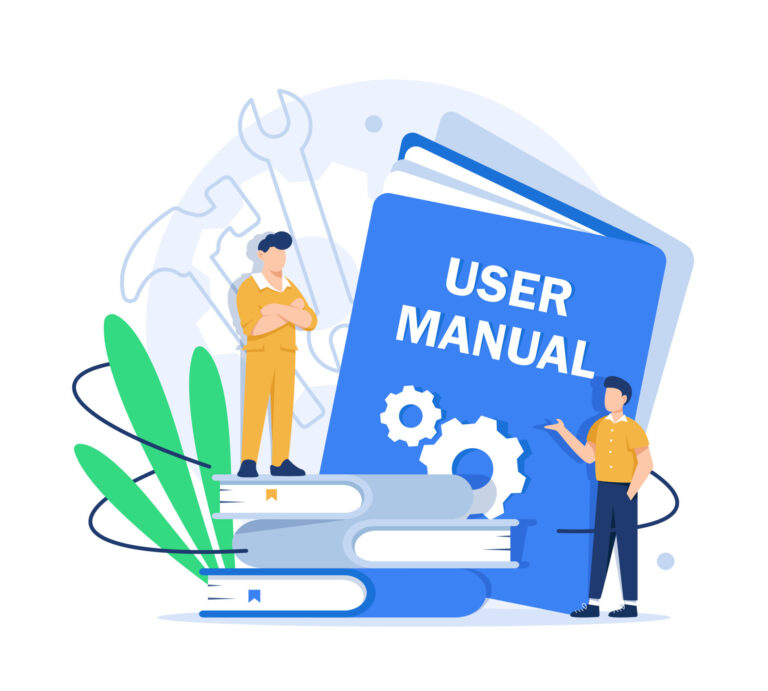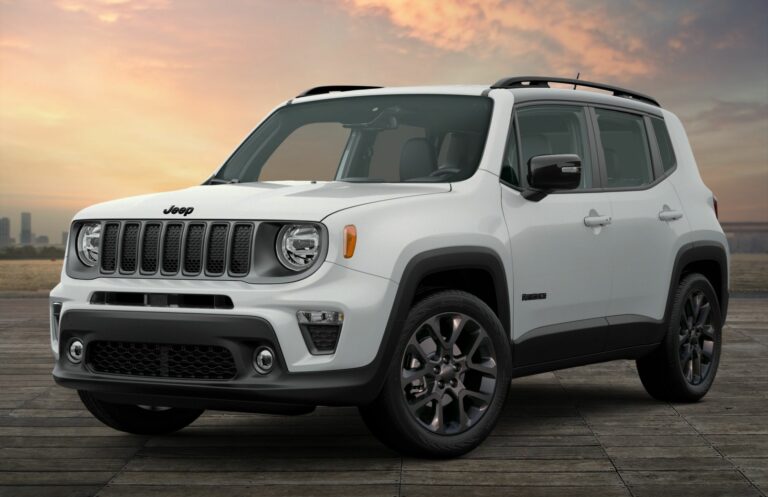4.0 Liter Jeep Crate Engine For Sale: Revitalizing Your Legend
4.0 Liter Jeep Crate Engine For Sale: Revitalizing Your Legend jeeps.truckstrend.com
The 4.0 Liter inline-six engine is more than just a power plant; it’s the beating heart of a generation of iconic Jeep vehicles. Renowned for its legendary durability, robust low-end torque, and surprising simplicity, this engine has powered countless Jeep Cherokees (XJ), Wranglers (YJ, TJ), and Grand Cherokees (ZJ) through millions of miles of trails, highways, and daily commutes. For many Jeep enthusiasts, the thought of replacing or upgrading this beloved engine often leads to the search for a "4.0 Liter Jeep Crate Engine For Sale."
A crate engine, in essence, is a brand-new or professionally remanufactured engine assembly, delivered "in a crate," ready for installation. For the 4.0L Jeep, finding a new one is increasingly rare, making high-quality remanufactured units the primary focus. This comprehensive guide will delve into everything you need to know about purchasing a 4.0 Liter Jeep crate engine, helping you make an informed decision to breathe new life into your cherished Jeep.
4.0 Liter Jeep Crate Engine For Sale: Revitalizing Your Legend
Why Choose a 4.0 Liter Jeep Crate Engine? The Legend Lives On
Before diving into the specifics of buying, it’s crucial to understand why the 4.0L remains such a popular choice, even decades after its last production. Opting for a crate engine means you’re investing in the continuation of a legacy, rather than chasing a costly and often complex engine swap.
- Unmatched Durability and Longevity: The 4.0L is famous for its cast-iron block and robust internal components, often reaching 200,000 to 300,000 miles with proper maintenance. A remanufactured crate engine resets that odometer, offering many more years of reliable service.
- Torque for Off-Roading: Its long stroke design delivers impressive low-end torque, essential for crawling over obstacles and navigating challenging terrain without constantly revving the engine. This characteristic makes it ideal for Jeep’s intended purpose.
- Simplicity and Maintainability: Compared to modern engines, the 4.0L is relatively simple in its design. This translates to easier diagnostics, straightforward repairs, and lower maintenance costs for the average DIY enthusiast or local mechanic.
- Abundant Parts Availability: The sheer number of 4.0L engines produced ensures a vast aftermarket and OEM parts supply. From sensors to gaskets to performance upgrades, virtually any part you need is readily available.
- Seamless Integration: A 4.0L crate engine is a direct fit for vehicles originally equipped with it. This eliminates the complexities, fabrication, and electronic nightmares often associated with non-native engine swaps. Your existing transmission, transfer case, and drivetrain components are designed to work perfectly with this engine.
- Cost-Effectiveness: While a significant investment, purchasing a remanufactured 4.0L crate engine is often more economical and less time-consuming than trying to rebuild your existing high-mileage engine or undertaking a complete engine and transmission swap from a different platform.
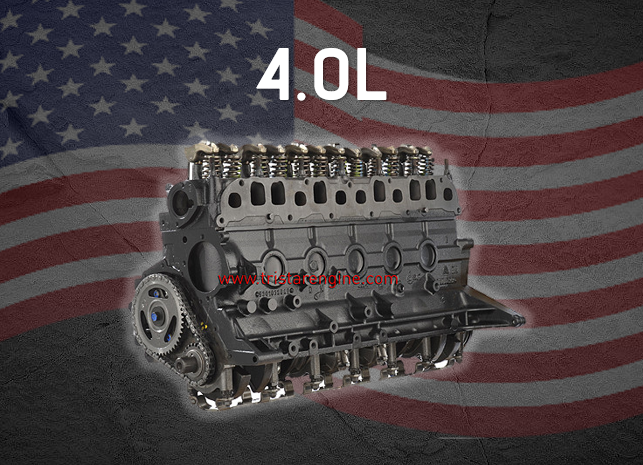
Understanding "Crate Engine" in the Context of the 4.0L Jeep
The term "crate engine" can sometimes be ambiguous. For the 4.0L Jeep, it almost exclusively refers to a professionally remanufactured unit rather than a brand-new, never-run assembly.
- New Crate Engines: While theoretically possible, finding a brand-new, factory-fresh 4.0L engine is incredibly rare and prohibitively expensive, as production ceased years ago. If you encounter one advertised as "new," exercise extreme caution and verify its authenticity.
- Remanufactured/Rebuilt Crate Engines: This is the most common and practical option. A reputable remanufacturing process involves:
- Disassembly and Inspection: The core engine is completely torn down, and all components are thoroughly inspected for wear, cracks, or damage.
- Machining: Critical components like the block, crankshaft, and cylinder head are precision-machined to original factory specifications or better. This might include boring cylinders, grinding the crankshaft, and resurfacing the head.
- New Components: Worn parts are replaced with new, high-quality components, including pistons, piston rings, bearings, lifters, camshaft, timing chain, oil pump, and gaskets.
- Assembly: The engine is meticulously reassembled by skilled technicians, often in a clean-room environment.
- Testing: The completed engine undergoes rigorous testing, including dyno testing, oil pressure checks, and compression tests, to ensure it meets performance and quality standards before being crated.
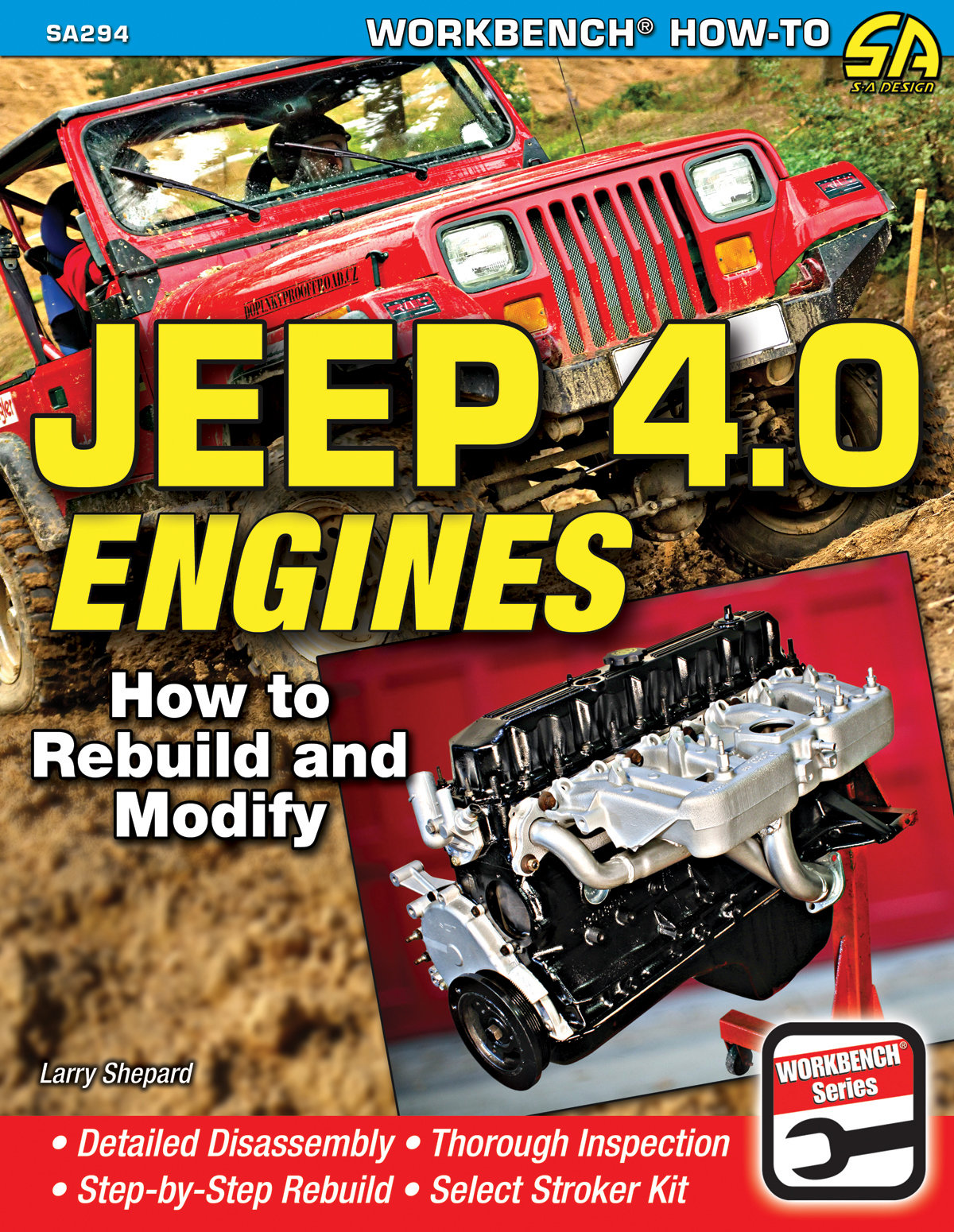
- What’s Typically Included?
- Long Block: This is the most common offering. It includes the cylinder block, crankshaft, connecting rods, pistons, cylinder head(s), camshaft, and timing components. You’ll need to transfer your existing intake manifold, exhaust manifold, sensors, accessories (alternator, power steering pump, AC compressor), and flywheel/flexplate.
- Complete Engine (Rare for 4.0L): Sometimes, a vendor might offer a "complete" engine, which would include most or all of the accessories, intake, and exhaust manifolds. These are less common for the 4.0L and typically come at a significantly higher price. Be clear on what’s included before purchase.
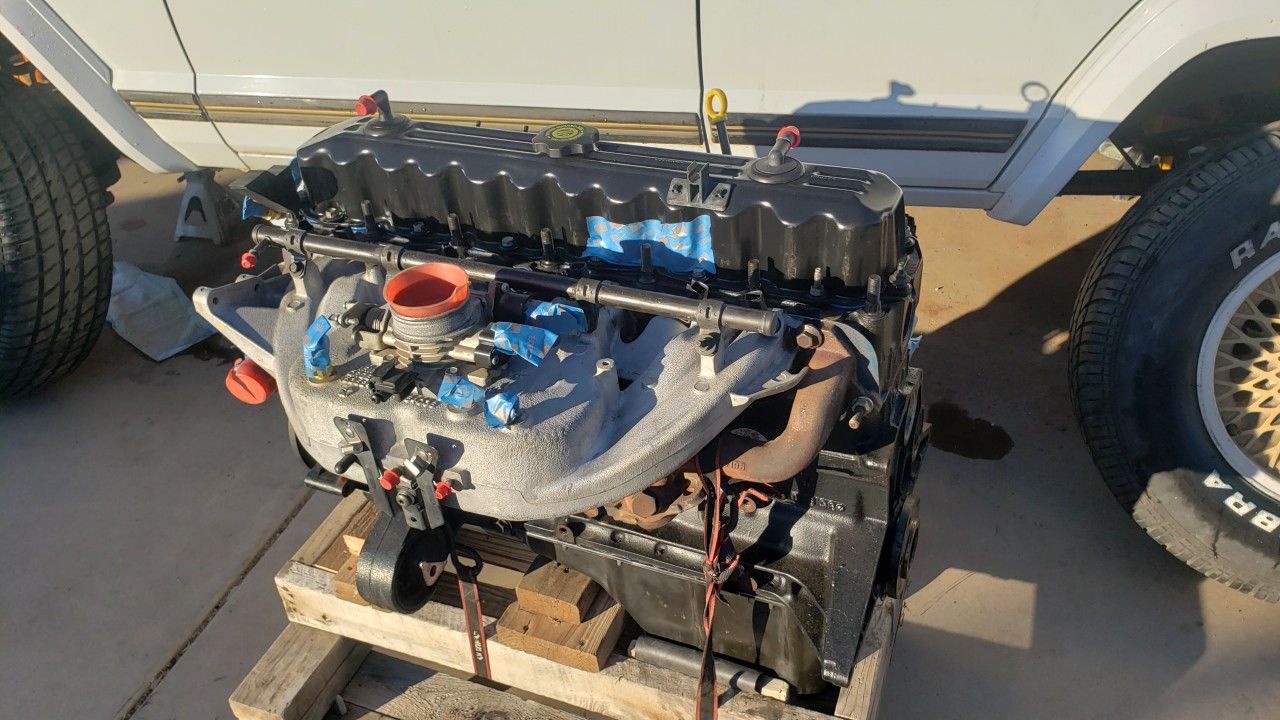
Key Considerations Before Buying Your 4.0L Crate Engine
Purchasing a crate engine is a significant investment. Thorough research and understanding are paramount to a successful outcome.
-
Application and Compatibility:
- Jeep Model Year: The 4.0L engine evolved over its production run. Early Renix (pre-1991) engines have different sensor locations and wiring harnesses than the High Output (HO) engines (1991-2006). While the long blocks are largely interchangeable, accessory mounting points, sensor bosses, and flywheels can differ. Ensure the crate engine is designed for your specific year and model (XJ Cherokee, TJ/YJ Wrangler, ZJ Grand Cherokee).
- High Output (HO) vs. Renix: Most crate engines will be based on the HO design due to its superior performance and more common availability of cores. If you have a Renix system, you’ll need to ensure compatibility or plan for a sensor/wiring swap.
-
Supplier Reputation and Warranty:
- Research, Research, Research: This is arguably the most critical factor. Look for reputable engine builders with a proven track record. Check online reviews, forum discussions, and BBB ratings.
- Warranty Details: A robust warranty is non-negotiable for a remanufactured engine. Understand what it covers (parts, labor, towing?), for how long (12 months/12,000 miles is common, but some offer more), and what voids it (improper installation, lack of break-in, certain modifications). Get the warranty in writing.
-
What’s Included and What’s Not?
- Clarify if it’s a long block, short block, or a more complete assembly.
- Will it come with a new oil pan, valve cover, or timing cover?
- Are essential gaskets included?
- You’ll almost certainly need to transfer your existing sensors (crank position sensor, cam position sensor, oil pressure sender), intake/exhaust manifolds, flywheel/flexplate, and all accessories. Factor in the cost of new gaskets for these components.
-
Core Charge:
- Most remanufactured engine suppliers require a "core charge." This is a refundable deposit paid at the time of purchase, which is returned to you when you send back your old, rebuildable engine ("core"). Ensure you understand the condition requirements for your core to be accepted and the timeline for return.
-
Shipping and Logistics:
- Cost: Crate engines are heavy. Shipping costs can be substantial, especially for residential delivery. Get a clear shipping quote upfront.
- Receiving: You’ll need a way to unload the engine (forklift, engine hoist, or multiple strong people). Inspect the crate for damage upon arrival before signing for it.
-
Emissions Compliance:
- Ensure the engine meets emissions standards for your state and year. A properly remanufactured 4.0L should, but it’s worth confirming, especially if you live in a state with strict emissions testing.
The Installation Process: What to Expect
Installing a crate engine is a significant undertaking, whether you tackle it yourself or hire a professional.
-
DIY vs. Professional Installation:
- DIY: Can save labor costs, offers a sense of accomplishment, and allows you to learn your vehicle intimately. Requires specialized tools (engine hoist, engine stand, torque wrenches), mechanical aptitude, and a dedicated workspace.
- Professional: Guarantees proper installation, often comes with a labor warranty, and saves you time and effort. Can be expensive (several hundred to over a thousand dollars in labor).
-
Key Installation Steps (General Overview):
- Preparation: Disconnect battery, drain fluids, remove hood, radiator, fan, and all accessories from the old engine.
- Engine Removal: Disconnect transmission, motor mounts, and hoist out the old engine.
- Engine Bay Prep: Clean the engine bay, inspect wiring and hoses for damage, replace worn motor mounts.
- Transfer Components: Carefully transfer your intake manifold, exhaust manifold, sensors, flywheel/flexplate, and all accessories to the new crate engine. Use new gaskets for all these interfaces.
- Installation: Lower the new engine into the bay, align with the transmission, secure motor mounts.
- Reconnect: Reconnect all wiring, hoses, lines, and accessories. Refill fluids (oil, coolant, power steering, etc.).
- Initial Start-up and Break-in: Follow the engine builder’s specific break-in procedure religiously. This typically involves varying RPMs, avoiding prolonged idling, and an early oil and filter change (e.g., after 500 miles). This step is crucial for the longevity of your new engine.
-
Common Pitfalls to Avoid:
- Not replacing critical wear items (motor mounts, radiator hoses, sensors, thermostat) while the engine is out.
- Failing to properly break in the engine.
- Ignoring the torque specifications for fasteners.
- Not using the correct fluids.
Maximizing Performance and Longevity of Your New 4.0L Crate Engine
A new crate engine is a fresh start. To ensure it lives a long, healthy life and performs optimally, consider these points:
- Adhere to Break-in Procedures: As mentioned, this is vital. It allows piston rings to seat properly and bearings to wear in correctly.
- Regular Maintenance: Stick to a strict maintenance schedule. Use high-quality oil and filters, perform timely coolant flushes, check spark plugs, and inspect belts and hoses.
- Upgrade Supporting Systems:
- Cooling System: The 4.0L can run hot, especially in older Jeeps or modified ones. Consider a new heavy-duty radiator, high-flow water pump, and fan clutch to prevent overheating, which is a common killer of these engines.
- Fuel System: Inspect your fuel pump, fuel filter, and injectors. A clean, consistent fuel supply is crucial.
- Ignition System: Fresh spark plugs, wires, cap, and rotor (if applicable) ensure optimal combustion.
- Performance Enhancements (Optional): Once the engine is properly broken in, you might consider bolt-on upgrades like a cold air intake, upgraded exhaust system, larger throttle body, or even a mild camshaft for more power. Always research compatibility and potential tuning requirements.
- Monitor Gauges: Pay attention to your oil pressure and temperature gauges. Early detection of issues can prevent major damage.
Sample Price Table: 4.0 Liter Jeep Crate Engine For Sale (Estimates)
Please note: Prices are estimates and can vary significantly based on the supplier, specific year/model compatibility, inclusions, core charge, and market conditions. Always get a detailed quote.
| Engine Type/Condition | Key Features/Inclusions | Estimated Price Range (USD) | Core Charge (USD) | Typical Warranty | Notes |
|---|---|---|---|---|---|
| Remanufactured Long Block | New pistons, rings, bearings, camshaft, lifters, oil pump, timing components, re-machined head & block. | $2,500 – $4,000 | $300 – $600 | 12-24 months / Unlimited miles | Most common option. Requires transfer of accessories, manifolds, sensors. |
| Remanufactured Complete | Long block plus intake/exhaust manifolds, sensors, fuel rail, injectors. (Accessories usually NOT included) | $4,000 – $5,500 | $400 – $700 | 12-24 months / Unlimited miles | Less common, verify what is truly "complete." Still needs accessories. |
| Performance Remanufactured | Upgraded camshaft, mild head porting, higher compression pistons. | $4,500 – $7,000 | $500 – $800 | 12-24 months / Limited miles | For enthusiasts seeking more power. May require ECU tuning. |
Disclaimer: These prices are for illustrative purposes only. Always obtain current quotes from multiple reputable suppliers.
Frequently Asked Questions (FAQ)
Q1: What’s the difference between a long block and a complete engine?
A1: A long block includes the block, crankshaft, pistons, cylinder head(s), camshaft, and timing components. You transfer your external accessories (alternator, power steering pump, AC compressor), intake/exhaust manifolds, and sensors. A "complete" engine (rare for 4.0L) would typically include manifolds, sensors, and sometimes the throttle body and fuel rail, but rarely all the accessories.
Q2: Do I need to return my old engine (core charge)?
A2: Yes, almost always. Reputable remanufacturers rely on your old engine ("core") to rebuild for future customers. You pay a core charge upfront, which is refunded once they receive your old, rebuildable engine. Ensure your core meets their requirements (e.g., no holes in block, intact crankshaft).
Q3: How long does a remanufactured 4.0L engine last?
A3: With proper installation, adherence to the break-in procedure, and regular maintenance, a high-quality remanufactured 4.0L engine can easily last another 100,000 to 200,000 miles, similar to a new factory engine.
Q4: Can I install a 4.0L crate engine myself?
A4: If you have significant mechanical experience, the right tools (especially an engine hoist and stand), and a good workspace, it is certainly doable. However, if you’re unsure, hiring a qualified mechanic is recommended to ensure proper installation and to protect your warranty.
Q5: What’s the best year 4.0L engine to get? (HO vs. Renix)
A5: Most enthusiasts prefer the High Output (HO) 4.0L engines (1991-2006) due to their slightly higher horsepower (190hp vs. 177hp) and more modern fuel injection system (OBD-I/OBD-II vs. Renix). If your Jeep is Renix, you can usually install an HO long block but will need to swap over your specific Renix sensors and sometimes adapt wiring.
Q6: Are there any common issues to watch out for with new crate engines?
A6: The most common "issues" are usually related to installation errors or failure to follow break-in procedures. Always check for leaks after initial startup, monitor oil pressure, and listen for unusual noises. Ensure all sensors are correctly connected and functioning. Reputable builders stand by their product, so contact them immediately if you suspect an issue.
Conclusion
The 4.0 Liter Jeep engine is a legendary workhorse, and choosing a high-quality remanufactured crate engine is an excellent way to extend the life and adventures of your beloved Jeep. While the initial investment is substantial, the benefits of reliable performance, direct fitment, and the continuation of your vehicle’s original character far outweigh the alternatives. By conducting thorough research, understanding the specifics of what you’re buying, and preparing for the installation process, you can confidently acquire a 4.0 Liter Jeep crate engine for sale and look forward to countless more miles of dependable performance on and off the beaten path. Your legend is ready to roar again.

